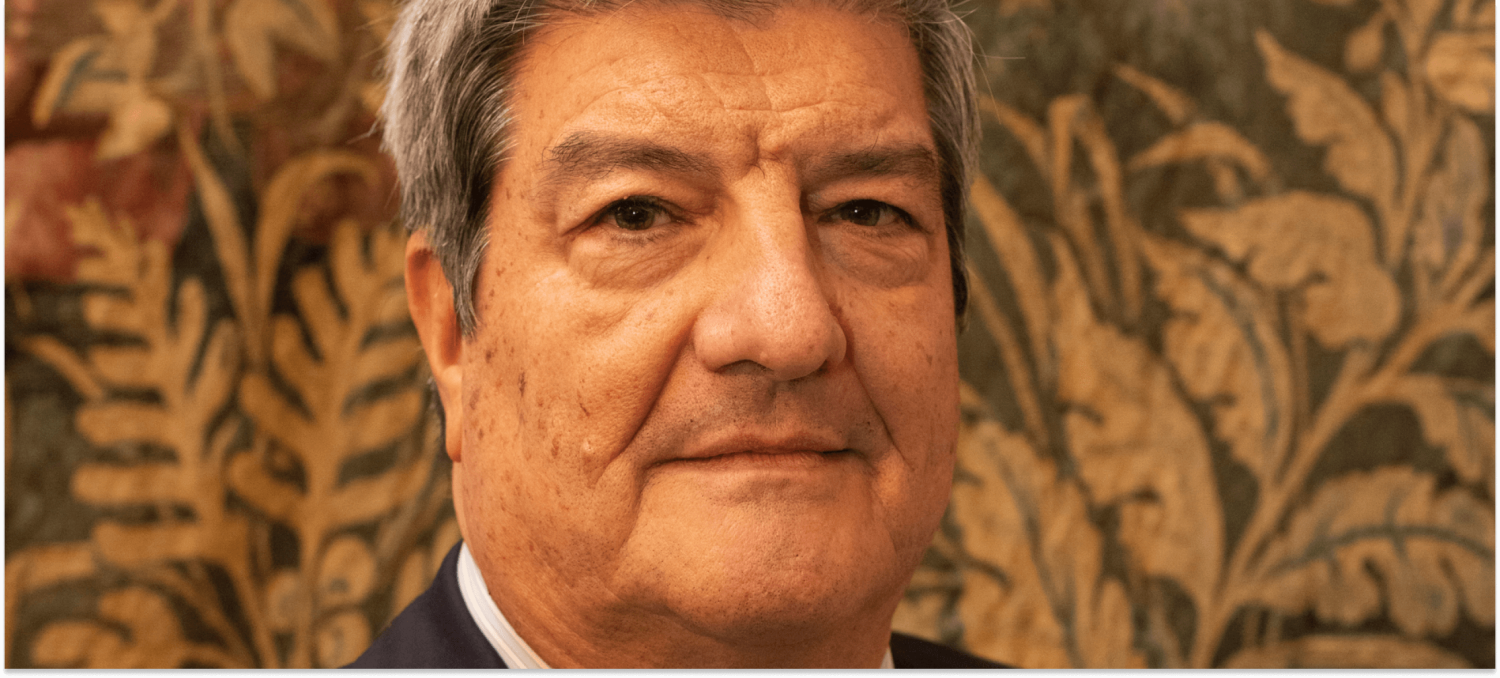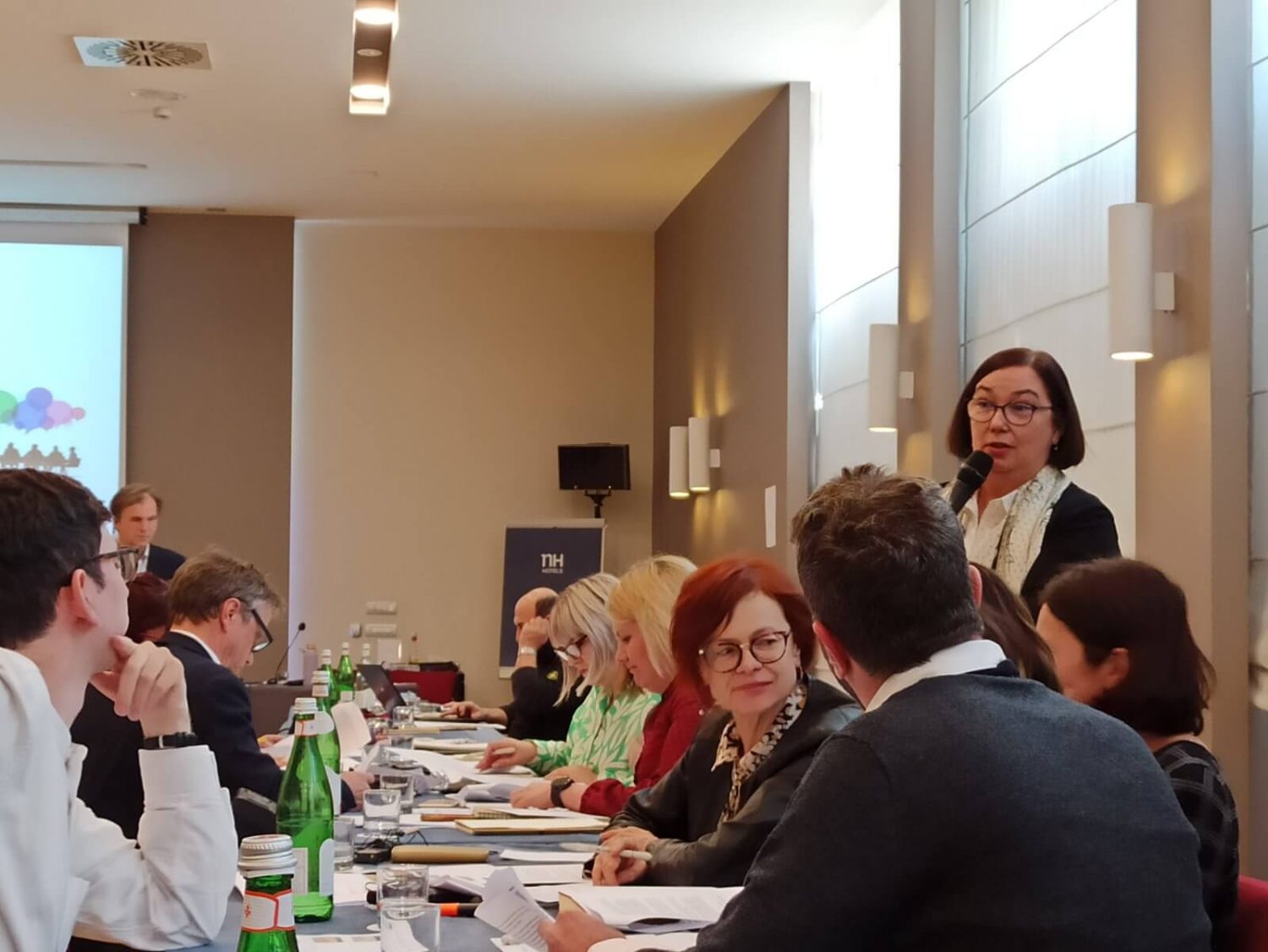
See all countries
- Argentina
- Australia
- Austria
- Belgium
- Bulgaria
- Canada
- Croatia
- Czech Republic
- Denmark
- Estonia
- Finland
- France
- Germany
- Greece
- Hungary
- Ireland
- Israel
- Italy
- Latvia
- Lithuania
- Luxembourg
- Netherlands
- North Macedonia
- Norway
- Poland
- Portugal
- Romania
- Serbia
- Slovakia
- Slovenia
- Spain
- Sweden
- Switzerland
- United Kingdom
- United States of America
Joined the IHRA
1999
International Holocaust Remembrance Day
27 January
Luigi Maccotta (Ministry of Foreign Affairs) – Head of Delegation
Paola Deiana (Ministry of Education) – Deputy Head of Delegation
Andrea Esteban Sama (Italian Foreign Ministry) – Academic Working Group
Sira Fatucci (Union of the Italian Jewish Communities) – Education Working Group
Massimiliano Boni (Union of the Italian Jewish Communities) – Museums and Memorials Working Group
Simonetta Della Seta (National Museum of Italian Judaism and the Shoah) – Museums and Memorials Working Group
Silvia Guetta (University of Florence) – Education Working Group
Saul Meghnagi (Union of the Italian Jewish Communities) –Museums and Memorials Working Group
Gadi Luzzatto Voghera (Foundation Jewish Contemporary Documentation Centre) – Academic Working Group
Micaela Procaccia (Ministry for Cultural Assets and Activities) – Museums and Memorials Working Group
Milena Santerini (Università Cattolica del Sacro Cuore of Milan) – Education Working Group
Michele Sarfatti (Foundation Jewish Contemporary Documentation Centre) – Academic Working Group
Amedeo Spagnoletto (Museum of Italian Hebrew Culture and the Shoah) – Museums and Memorials Working Group
Caterina Spezzano (Ministry of Education) – Education Working Group
Since joining the IHRA, the Italian Government has increased its support for initiatives which aim to strengthen Holocaust remembrance, education and research. Following the 2004 Italian Chairmanship, institutions and civil society have become more involved in Holocaust-related issues. The collaboration between the Ministry of Education and the Union of Italian Jewish Communities has produced positive results. It also continues to strengthen the civil consciousness of future generations — particularly with a national, annual poster competition, prominently awarded by the President of the Italian Republic. The numerous memorial initiatives and events around 27 January — organized by institutions and civil society groups — receive widespread media attention. The 2018 Italian Chairmanship aims to further awareness of the IHRA among Italian institutions and academia.
Holocaust education, remembrance, and research in Italy
All IHRA Member Countries are asked to complete a basic questionnaire with key facts about the state of Holocaust education, remembrance, and research in their country. The answers to the questionnaire, and to the Country Report, if available, are provided by the national delegations, who are also responsible for keeping the information up to date.
President of the Senate Elisabetta Casellati, Fondation Shoah Museum, Rome (27th of January, 2022)
https://senato.it/presidente/comunicati/giorno-della-memoria
“The Remembrance Day is an opportunity to forcefully renew our common commitment to fight indifference, which, as Liliana Segre reminds us, was the true accomplice of the misdeeds of the Shoah. Only remembering the atrocities suffered by millions of innocent Jews, children, women and men, we can keep the awareness of the past mistakes and the devastating consequences they have produced. […] This collective path cannot, however, be limited to January the 27th. It is a commitment that must be made every day, recalling the journey that has led Europe to base itself on principles of freedom, democracy and the protection of human rights, after the horror of the Holocaust. This is the responsibility we have towards young people because it is the only way to make them grow as real guardians of peace, brotherhood and tolerance values”
– Prime Minister Draghi at ‘Platform 21’ Shoah Memorial, Milan (30th September, 2021)
https://www.governo.it/en/articolo/prime-minister-draghi-s-speech-platform-21-shoah-memorial/18098
“Remembrance is not a passive thing; it is a commitment to the present.
We must take action focusing on the deep roots of racism and antisemitism, tackling their violent expressions and curbing any form of denialism.
They are a threat to civilised living, to our freedom.
Italy’s institutions are committed to combatting antisemitism.
Through the national strategy coordinated by Professor Santerini, and the Special Commission headed up by Senator Segre herself.
These efforts must be made not only in Italy, but also in the rest of Europe.”
– President of the Chamber of Deputies Roberto Fico, Ministry of Foreign Affairs (24th of January 2019)
https://presidente.camera.it/19?discorso=1616
“Teaching the Shoah also means restating that the Republic and its Constitution are born of resistance and anti-fascism. And they are based on fundamental principles and values aimed to avoid those events happen again. Freedom, equality and justice are not acquired forever and we must defend and promote them every day.”
On 4 October 2018 the Assembly of the Chamber of Deputies discussed and approved a number of motions on initiatives aimed at combating antisemitism
https://www.camera.it/leg18/410?idSeduta=0056&tipo=stenografico#sed0056.stenografico.tit00050.
– On 30 October 2019, the Senate Assembly approved a motion for the creation of an Extraordinary Committee to combat the phenomena of intolerance, racism, antisemitism, and incitement to hatred and violence.
http://www.senato.it/leg/18/BGT/Schede/Commissioni/0-00143.htm
– To strengthen the fight on contemporary antisemitism, the 17th of January 2020 the Council of Ministers appointed professor Milena Santerini as National Coordinator for the fight against antisemitism, In the same meeting, the Council of Ministers adopted the IHRA Working Definition of antisemitism.
– On 20 December 2017, Parliament approved law 212/2017 “Creation of the Day in Memory of the Righteous among the Nations”
https://www.normattiva.it/uri-res/N2Ls?urn:nir:stato:legge:2017;212
– Guidelines on combating antisemitism in schools (November 2021).
https://www.scuolaememoria.it/site/it/home-page/
– UNAR established the National Platform and the Roma, Sinti and Caminanti communities Forum with a decree from September 11th 2017, issued by the chief of the Equal Opportunities Department, following an expression of interest (http://www.unar.it/wp-content/uploads/2018/04/Decreto_Piattaforma-_Forum_RSC.pdf). The Platform is composed by 79 associations from all over the country and it is an instrument of dialogue between UNAR, Roma, Sinti and Sector Associations and local or central Public Administrations engaged in the national plan. The Forum represents the central core of the Platform and it is composed by 25 associations that declared, within the expression of interest, to be composed for the major part by members of Romani or Sinti origin. The Forum, within the Platform, has prerogatives about identity, language, Antiziganism themes.
The Holocaust remembrance events are very numerous and widespread. The most important ones are at national level. They take place at the Quirinale Palace, or at the Ministry of Education, and at the Senate of the Republic, and at the Chamber of Deputies the 27th of January.
– At local level, in every town and municipalities celebrations are organized. Students in schools attend to special events. Generally, during these occasions, the Genocide of the Roma is remembered too.
According to the available documentation, universities in 85% of Italian regions tackle subjects related to the Shoah, the history of the Jews and Anti-Semitism. Moreover, the findings show that more than 61% of universities cover the subject of the Shoah with an overall total of 210 courses.
– Notably, within the academic landscape, the three-year degree course in Jewish Studies has been available to students for the last seven years. https://ucei.it/formazione/diploma-triennale-in-studi-ebraici/
– Since 2015, the University of Florence has also been offering in-depth study courses on the Shoah and related educational issues, with various learning options, as an academic commitment for the training of teachers, educators, teacher trainers and researchers. https://www.unifi.it/p11169.html#storia
We have no results about specific professorships about the Roma genocide, but the topic is developed inside university curricula.
Yes, we have noteworthy research. The most remarkable of them are listed here:
– Giorgio Fabre, con la collaborazione di Annalisa Capristo,
Il razzismo del duce. Mussolini dal Ministero dell’Interno alla Repubblica sociale italiana , Carocci, Roma 2021.
– Filippo Focardi, Nel cantiere della memoria. Fascismo, Resistenza, Shoah, foibe, Viella, Roma, 2020.
– Eva Rizzin, Attraversare Auschwitz. Storie di Rom e Sinti identità, memorie, antiziganismo. Gangemi, Roma 2020.
– Bruno Maida, La shoah dei bambini. La persecuzione dell’infanzia ebraica in Italia 1938-1945, Einaudi, Torino 2019.
– Liliana Picciotto, Salvarsi. Gli ebrei d’Italia sfuggiti alla shoah, 1943-1945. Una ricerca del Centro di documentazione ebraica contemporanea, Einaudi, Torino 2017.
– Michele Sarfatti, Gli ebrei nell’Italia fascista. Vicende, identità, persecuzione, nuova edizione, Einaudi, Torino 2018.
No specific surveys have been conducted on the subject. Some demoscopic studies administered to Italian citizenry included questions on the general knowledge of the history of the Shoah and its impact in Italian history. However, the focus is not on this issue but on anti-Semitism and its persistence in Italian society. The latest survey carried out by Eurispes in 2020 indicated poor knowledge of the subject.
No questionnaires have been conducted on the Roma Genocide. However, it is safe to say that the understanding of this issue has changed over time as it was previously not researched, studied, and understood while today this issue is a recurring object of analysis in all contexts related to Remembrance.
At high-school level the most used history textbooks are:
– Abitare la storia. Dal mille alla metà del 600. (In volumi) Scolastiche Bruno Mondadori, 2020, https://www.amazon.it/dp/8869107590?tag=libritop.it-21
– Le vie della civiltà. Dalla preistoria all’età di Cesare. (In volumi) Zanichelli, 2021, https://www.amazon.it/dp/880892016X?tag=libritop.it-21
– Storia e storiografia. Per la scuola del terzo millennio. D’Anna,https://www.amazon.it/dp/880892016X?tag=libritop.it-21
2019, https://www.amazon.it/dp/8857791580?tag=libritop.it-21
– La storia in 100 lezioni. La nuova Italia Editrice
2020, https://www.amazon.it/storia-lezioni-triennio-superiori-espansione/dp/8830203440/ref=sr_1_1?keywords=storia+per+il+triennio+superiore&qid=1653898109&s=books&sr=1-1
– Entrare nella storia. (In volumi) Atlas, 2020, https://www.amazon.it/Entrare-storia-triennio-superiori-espansione/dp/882682326X/ref=sr_1_13?keywords=storia+per+il+triennio+superiore&qid=1653898109&s=books&sr=1-13
– Una storia per riflettere (In volumi) La nuova editrice italiana, 2020, https://www.amazon.it/storia-riflettere-triennio-superiori-espansione/dp/8830203920/ref=sr_1_15?keywords=storia+per+il+triennio+superiore&qid=1653898109&s=books&sr=1-15
– Lo spazio del tempo (In volumi) Laterza edizioni scolastiche, 2020, https://www.amazon.it/ragioni-storia-triennio-superiori-espansione/dp/8842118087/ref=sr_1_21?keywords=storia+per+il+triennio+superiore&qid=1653898645&s=books&sr=1-21
– Guida allo studio della storia (In vol 5) La scuola, 2017, https://www.amazon.it/storia-linterrogazione-lesame-superiori-espansione/dp/8835047692/ref=sr_1_31?keywords=storia+per+il+triennio+superiore&qid=1653898645&s=books&sr=1-31
– Storia in azione 2022, https://www.zanichelli.it/ricerca/prodotti/storia-in-azione
– Di tempo in tempo nuova edizione 2022 , https://www.zanichelli.it/ricerca/prodotti/ditempointempo2ed
– Noi di ieri, noi di domani. 2021, https://www.zanichelli.it/ricerca/prodotti/noi-di-ieri-noi-di-domani
– Noi nel tempo 2021, https://www.zanichelli.it/ricerca/prodotti/noineltempo2ed
– Ti spiego la storia 2019, https://www.zanichelli.it/ricerca/prodotti/ti-spiego-la-storia
The most used literary textbooks are:
– Levi, Primo, Tzvetan Todorov, and Walter Barberis. I sommersi e i salvati. Vol. 59. Torino: Einaudi, 1986.
– Levi, Primo, and Cesare Segre. Se questo è un uomo. Turin: Einaudi, 1976.
– Levi, Primo. La tregua. Einaudi, 1980.
– Frank, Anna. Il diario di Anna Frank. Le vie della Cristianità, 2016.
– Debenedetti, Giacomo. 16 ottobre 1943. La Nave di Teseo Editore spa, 2021.
– Bruck, Edith. Il pane Perduto. La nave di Teseo, 2021.
For the primary and middle schools:
– Segre, Liliana, Daniela Palumbo, and Ferruccio De Bortoli. Fino a quando la mia stella brillerà. Piemme, 2018.
– Levi, Lia. Una bambina e basta. E/O Edizioni, 1994.
– Levi, Lia. Questa sera è già domani. E/O Edizioni, 2018.
– A questionnaire was recently proposed to teachers attending a training course in 2022 at the University of Florence, and here we provide the results.
https://dochub.com/ele-panniello/oGZeMNnwXY1LWgeRQvbrYd/indagine-libri-di-testo-e-distorsione-pdf
At academic level, the most used textbooks are:
– Wolfganf Benz, L’olocausto, Bollati Boringhieri, Torino 1998 (ed. or. Der Holocaust).
– Saul Friedländer, La Germania nazista e gli ebrei. Gli anni della persecuzione, 1933-1939, Garzanti, Milano 1998 (ed. or. Nazi Germany and the Jews. The Years of Persecution, 1933-1939); id.,
– Gli anni dello sterminio. La Germania nazista e gli ebrei,1939-1945, Garzanti, Milano 2009 (ed. or. The Years of Extermination. Nazi Germany and the Jews. 1939-1945).
– Valeria Galimi, Sotto gli occhi di tutti. La società italiana e le persecuzioni contro gli ebrei, Le Monnier Università-Mondadori Education, Firenze 2018.
– Raul Hilberg, La distruzione degli ebrei d’Europa, Einaudi, Torino 1999 (ed. or. The Destruction of the European Jews).
– Michele Sarfatti, La Shoah in Italia. La persecuzione degli ebrei sotto il fascismo, Einaudi, Torino 2005.
There are no specific surveys on this topic. In some demographic ones, questions have been included concerning the common knowledge in Italian citizenship of the history of the Shoah and its weight in Italian history, but the focus is not on this issue, but on antisemitism and its persistence in Italian society. The last assessment carried out by Eurispes highlights not comforting knowledge data. So, the answers are not consistent with the question. Also, about the evaluation of the effectiveness of the teachings on the Shoah in Italy we do not have scientific revelations, but implicit positive evaluations also deduced from the results of the competition ‘young people remember the Shoah’, already mentioned, also in terms of knowledge and deepening of the issue of the Shoah, as a whole. The attention paid to the subject, in the curricula, is also a testimony to this.
No questionnaires were made on the Roma genocide. However, we can say that the understanding of the topic has changed over time since initially it was not studied, while today this topic (this issue) is constantly being examined in all those contexts that deal with memory.
As regards the Holocaust:
– The National Museum: MEIS THE NATIONAL MUSEUM OF ITALIAN JUDAISM AND THE SHOAH, opened in 2017 (www.meisweb.it)
– THE SHOAH MEMORIAL IN MILAN, Opened in 2013, it has come to its complete fruition in January 2015, when the exhibitions space was inaugurated (www.memorialeshoah.it).
– FOUNDATION FOR THE MUSEUM OF THE SHOAH IN ROME (www.museodellashoah.it). The “Fondazione Museo della Shoah” is a no-profit organization born in July 2008 with the mission of giving support to the project of the National Shoah Museum to be constructed in Rome.
– The Foundation receives funds from Rome municipality and the Lazio region, it also receives a financial aid from UNAR. The Italian government gives funds to MEIS and to other memorials in different ways.
We have no museum dedicated to the persecution of the Roma.
– In October 2018 a memorial was inaugurated in Lanciano (Abruzzo). (https://www.ilmessaggero.it/abruzzo/sterminio_rom_sinti_monumento_memoria_lanciano_samudaripen_foto_video_santino_spinelli-4019320.html).
All Italy Holocaust Museums – the National Museum of Italian Judaism and the Shoah in Ferrara, the Ferramonti Camp (Modena), the Shoah Memorial in Milan, the Shoah Foundation in Rome, the San Sabba Risiera in Trieste – are aware of the Memorial Museum Charter and declare to share its goals and commitments.
The same museums are part of International networks and work along the Memorial Museum Charter guidelines in order to match ICOM and IC MEMO requirements.
Nevertheless, no specific steps have been taken by the Italian Holocaust Museums to publicize this commitment and to make the Memorial Museum Charter aknowledged both by their financial sponsors and by their visitors. The Italian delegation at IHRA is willing to raise more interest on this subject in the near future.
The Italian State supports these organizations in various ways:
– CDEC Foundation – Included in the MiBACT and MIU according to a triennial financial plan. Funded under Law 155/2009.
– Fondazione Museo della Shoah di Roma (recipient of public funding in various forms; public authorities sit on its Board of Directors).
– Fondazione Memoriale della Shoah di Milano (recipient of public funding in various forms; public authorities sit on its Board of Directors).
– Associazione Figli della Shoah has an agreement with the MIUR, managing relations with Yad Vashem for the Lombardy Region.
– Fondazione Museo Italiano dell’Ebraismo e della Shoah MEIS – (National Museum of Italian Judaism and the Shoah) of Ferrara is a national museum dependent on MiBACT and co-financed by public bodies.
– Fondazione Fossoli in Carpi (Modena) (recipient of public funding in various forms; public authorities sit on its Board of Directors).
– Fondazione Villa Emma di Nonantola (Modena) (recipient of public funding in various forms; public authorities sit on its Board of Directors).
– UCEI (on the basis of the Memorandum of Understanding, signed in cooperation with MIUR).
– The International Master on Holocaust Studies, Remembrance and Education of the Roma Tre University.
– Talmud Project (aimed at translating the Talmud into Italian and opposing the Antisemitism)
– Mario Draghi, Senate of the Republic, 10th February 2022
https://www.governo.it/en/articolo/prime-minister-draghi-s-speech-senate-day-remembrance/19122
“Today, we commemorate the men and women who were killed by Yugoslav partisans and by the persecution of Tito’s regime.
We also remember all those who were forced to leave their land.
Their stories serve as a warning that is more relevant than ever, about the danger posed by totalitarianism and political violence.
We remember, so that such divisions, such hate, such injustice can never happen again, in Italy or in Europe.”







